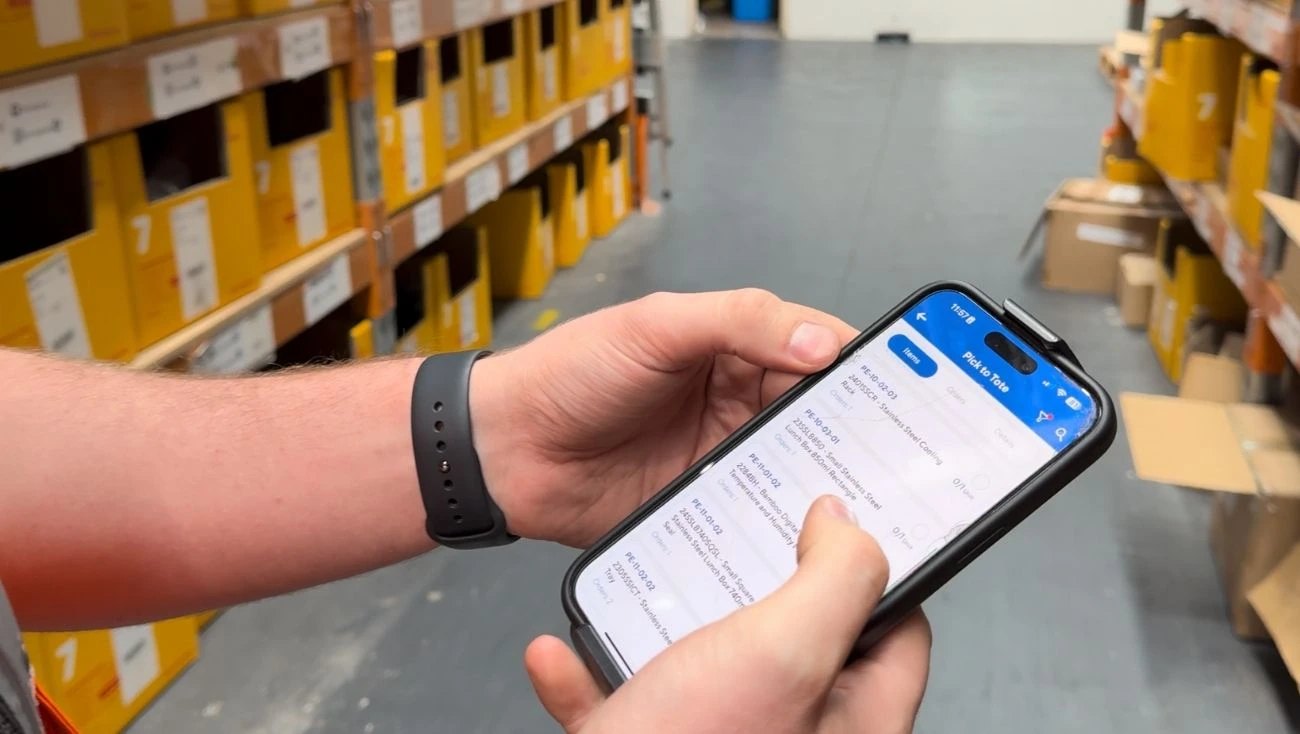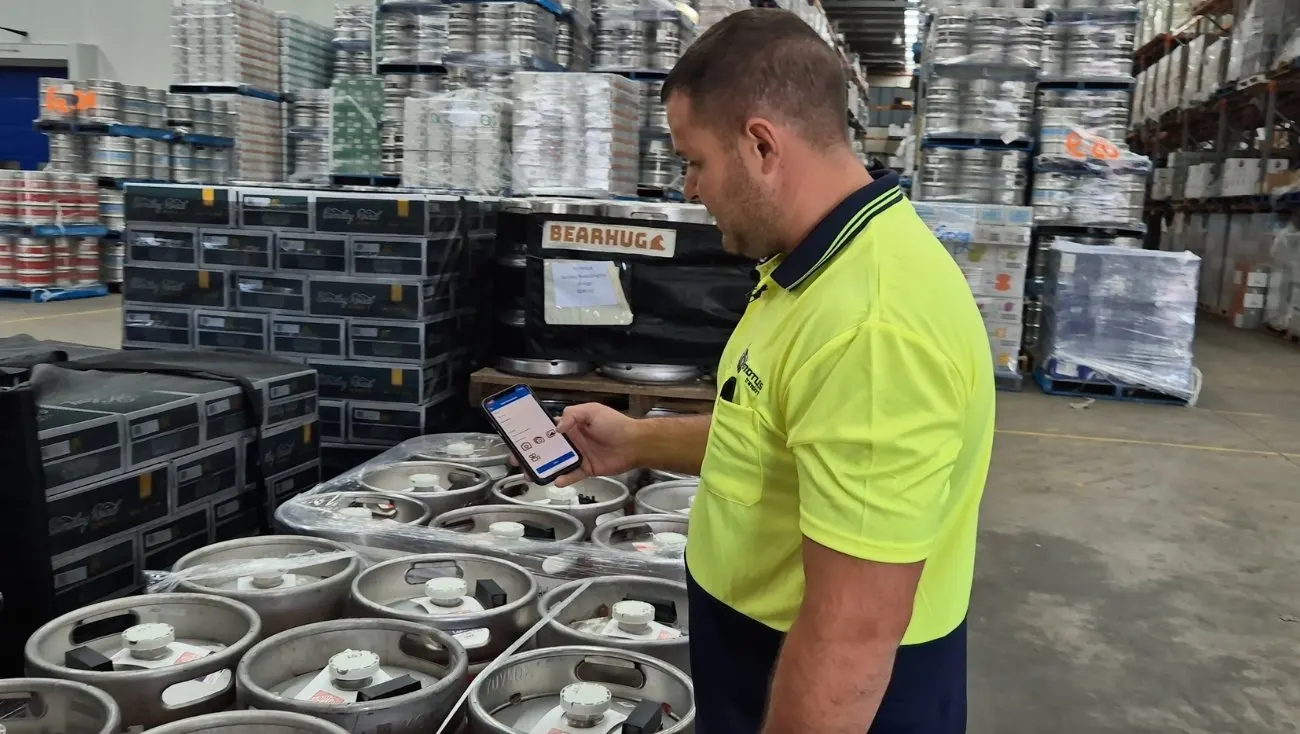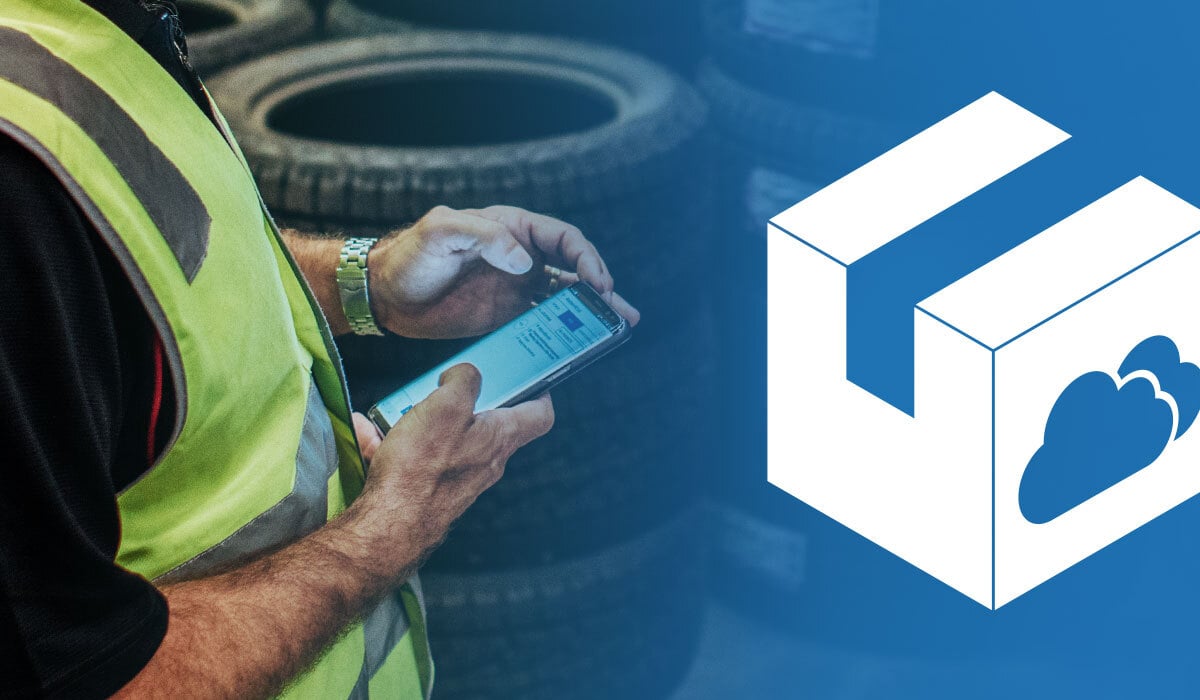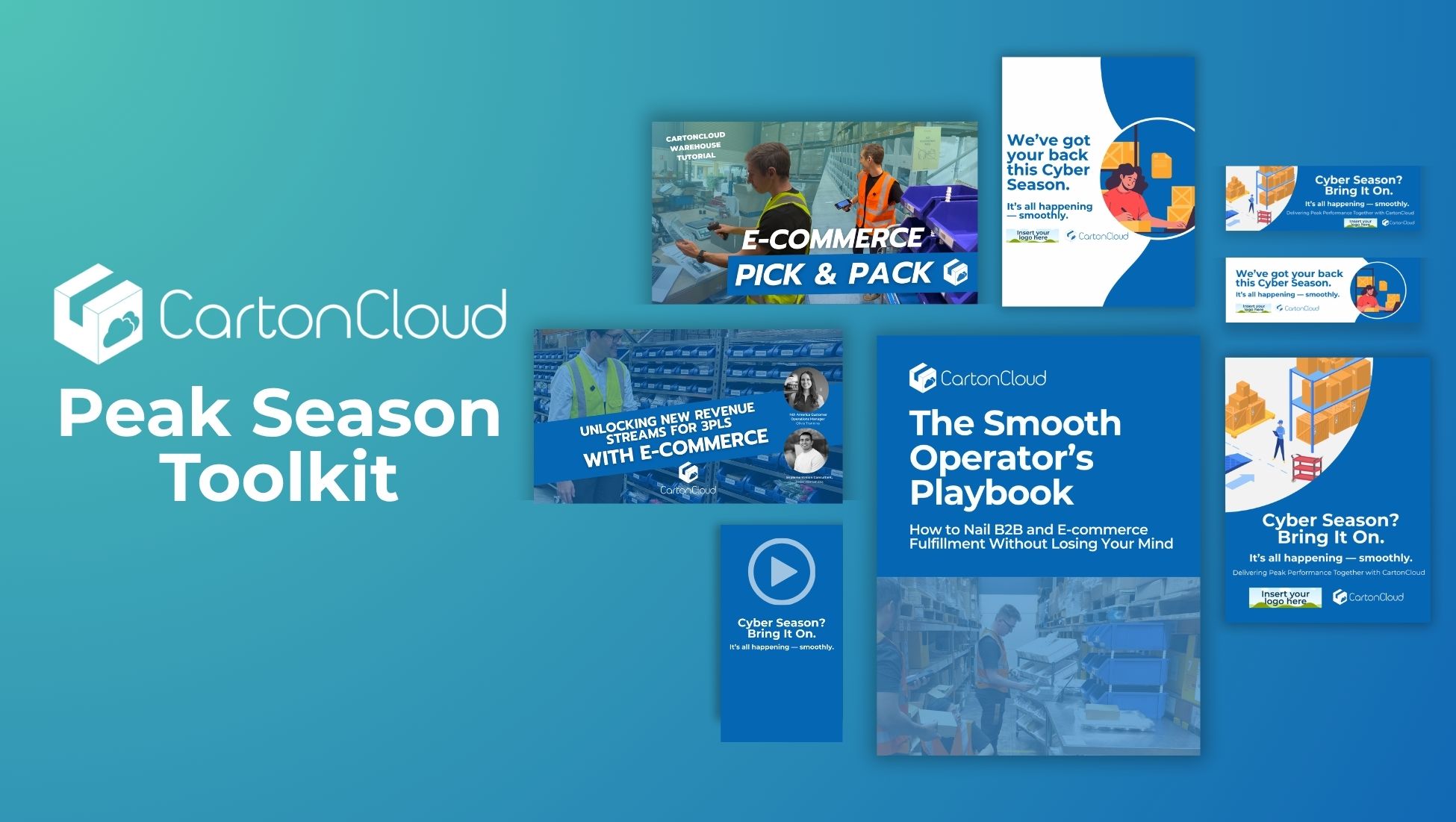The Logistics People - EP004 Collective Logistics

Shaun:
Good day, Shaun from CartonCloud here, and I've got Jimmy and Jamie from Collective Logistics to join for a little podcast today. How are you boys going?
Jamie:
Very well, thanks. Thanks for having us.
Shaun:
No worries.
Jimmy:
Thank you very much. Great to be here.
Shaun:
Another day in paradise. Obviously we're all based up in the Gold Coast, so we like to refer to these guys as our favourite local customer. There's not a lot of competition around the Burleigh Heads. But the 4220 represent going down here. So we've even got a local beer here for our afternoon catch-up towards the end of the week.
Shaun:
So guys, thanks for joining us today. Just for those of you who maybe haven't seen the case study, who don't know about your business, you want to give us a little bit of background about Collective Logistics?
Jamie:
Yeah, for sure. Something that Jimmy and I have had in the pipeline for a little while now. We put our brains together and it's something that we're really proud of where we've come so far and we've...
Shaun:
And how long have you and Jimmy known each other?
Jamie:
Oh, I think it's been, jeez, at least 10 years now.
Jimmy:
Yeah. It must be close to about 10 years. Me and Jamie have been buds for a long time in and out of traveling, everything else, living together.
Jamie:
We were trying to loosely discuss, like, "When did we first meet?" And I think I've been friends with Jimmy's brother, Johno for a little bit longer. And then we all just became friends.
Shaun:
Do you like Jimmy more than Johnny now?
Jimmy:
I'll take it.
Shaun:
Now, we did say when we were talking, that we weren't going to talk about the South America bike trip, but we'll put that on our other podcasts another time, guys. So do you want to just maybe also give us a bit of background on how you guys ended up starting Collective Logistics? So what I've loved about working with you guys has been the story that you guys came with, and then how you parlayed that into what's a really cool little business. So maybe just in your own words, you want to take us through what you guys do professionally, and then how Collective Logistics came out of that?
Jimmy:
Cool, yeah. Well, pretty much, Jamie and I were working for a Burleigh based apparel company. They're probably a medium sized business, 20, 25 staff or so we're working together and had a fair bit of understanding how they manage their logistics. Jamie stayed back working for the local company, and I jumped over to a larger organisation where I learned how they were managing their warehouse management systems. And obviously, we were still good buds hanging out daily, but connecting the dots as to how medium size apparel businesses were managing their daily operations on the backend and then how the larger guys were doing it, and just saw that the larger guys obviously had a lot more time and investment in their logistics. And basically what we saw was just an opportunity for those medium-sized businesses that didn't necessarily see the value in their logistics. They were probably more so focusing on their sales and their marketing and their product.
Jamie:
It was always an afterthought for the smaller companies. And I think the bigger companies have made it such a priority, I guess just having that efficiency at the larger level is so important. But I think the smaller to medium sized companies still really need that value.
Shaun:
And both of the businesses were actually handling their own fulfillment, right?
Jamie:
Exactly. Yeah.
Shaun:
So their own logistics with third party carriers, but it was all handled in-house.
Jimmy:
Yeah, which is we learned how one did it so much better than the other, which is where we learned about the systems that they use and those sorts of things. But we put our heads together and asked how many businesses like the medium sized apparel businesses that we're working for were there.
Jamie:
And these are still decent sized companies.
Shaun:
And you guys were working both on wholesale and online, right? Because you've been there for a few years. So that transitioned to a more E-commerce or online fulfillment, you saw that firsthand, right?
Jamie:
Yeah. Well, Jimmy was definitely 100% focused on the online sector. I was working as account manager in the wholesale business. I could completely see the online sales coming. It really felt like I really wanted to get more into that side of the market. And that's where the majority of the opportunity was. We really set ourselves up to be direct to consumer, D2C.
Shaun:
So I must interrupt your story there. So from there you were seeing that shift coming and then I guess what happened from there to Collective? Because obviously, probably not the first people to sit there and think, "E-commerce is coming," but you guys are now running a pretty high volume, 3PL here on the Gold Coast. So there's a few steps in the.
Jimmy:
Big time. Well, I guess there's a lot of medium-sized of apparel businesses between, all over Australia, but particularly Gold Coast, Byron Bay, a lot particularly that don't, I guess, necessarily want to invest in their logistics. That's where we come along and that's pretty much our target market.
Jamie:
Yeah. We just started planning it out, just thinking, "Okay, can we do this? Is there a way to group everyone up together? Is there a software company?"
Shaun:
Did you what third party logistics was at that stage? Or maybe I should ask a different question. How much did you know about third-party logistics at that stage?
Jimmy:
Only commercial volumes, not really smaller scale.
Jamie:
We understood there was at a large scale that you could do that-
Shaun:
Like more volumes of maybe 5,000 a month.
Jimmy:
10,000 meters squared warehouses.
Jamie:
There's almost this distant thing that was, I don't know, it was impossible. You'd heard of it, but did anyone do that? Is that even a thing, that was my understanding.
Jimmy:
The barriers to entry for a medium sized business were just too high. So that's pretty much where Collective came from. If we were those a medium sized apparel businesses that don't want to invest, do it ourselves, we absorb the risk and the expenses, what are our options? And their essentially weren't really any other than going to those commercial sized spaces.
Jamie:
So there was nothing, I guess in our mind that was in that middle tier.
Shaun:
All right. So you found the opportunity for that medium, middle-size business to start taking on some of their fulfillment because you'd seen what good looked like and you'd seen what they were doing and seen an opportunity. So what was that vision and how did that change when... How do you take that vision? And how'd you go and start approaching some customers and making that a reality as well?
Jamie:
I think we really wanted to map out what our service would look like and what would be our key point of difference. And I think ultimately just mapping that out from exactly having... can we pull it off? Is there a software company that can help us have an amazing level of accuracy? And then is it our service and what components of our service are we going to build on that's really going to set us apart from the rest? And that's probably been the biggest thing for Jim and I, being so genuine and so transparent with the service that we offer, we've really been able to connect with the customers in that way.
Jamie:
So to answer your question, yeah, we spent at least six to 10 months maybe mapping out exactly what it would look like as a business, before we went and started approaching customers with our sales pitch, which is like, "This is what we have to offer you guys."
Shaun:
I think we've spoken again before about that niche, but how do you think you've been able to differentiate the niche, and what is that niche for taking a different approach to the fulfillment of those medium sized companies?
Jimmy:
Well, I guess probably the biggest separator that why businesses are scared of going elsewhere is probably just losing that disconnect, which is where we've really tried to refine ourselves, making sure that our clients are connected, whether it's through their product, the customer experience-
Shaun:
So the biggest barrier to someone outsourcing from doing it themselves to taking on a 3PL, because I think that's where most of your customers are coming from, is the control, although-
Jimmy:
Exactly.
Jamie:
It's their baby. They've put so much time, energy and love into it and they're like, "Oh, to give it off to someone else is scary." And I think what we've been able to do is break down that resistance or fear of losing that control because-
Shaun:
And so how have you done that? Because that's a really interesting... I mean, it's the same where you're going to someone who's got an alternative 3PL. Maybe you're just arguing on cost or service or turnaround times, but when you're going from someone who doesn't have it, how have you been able to break down and build that trust?
Jimmy:
I would say more so probably just how we describe ourselves as client focused. We say that obviously our time model's geared towards what the client needs and that can be anything from our pricing structure to our flexible terms, no locking contracts, no minimum volume requirements and those little terms of service that we offer that aren't necessarily as scary as what someone else is offering. So it's a little barrier of entry as to why they'd use us. And it runs deep through our pricing structure and everything else. It's just pretty much, we've seen what's out there, we've put ourselves in the shoes of the brand and what they want to see, and that's pretty much what we offer.
Jamie:
That's a good thing to touch on. I think we always looked at it as if... because we come from brands, what would a brand want? What would I want as an owner of a brand or a company? What interactions would I want with a 3PL? And so every time we thought of a service or the way we would structure our approach to a company would always be in their best interest or as what we would want to have put forward to us.
Shaun:
Yeah. And now we're down the track and you guys have got a successful 3PL that's not even a little 3PL. You guys are doing thousands of orders in weeks.
Jamie:
I think we just knocked over 22,000 orders in the first five months.
Jimmy:
Five months, 22,000, which is actually a bit of a milestone for us, which is pretty exciting.
Shaun:
So not bad, guys. It's really impressive once you go down that.
Jamie:
I don't know how many we've packed ourselves. Quite a few.
Jimmy:
22,000.
Shaun:
So obviously, you guys are focusing on that E-commerce, and I've just downloaded the latest Auspost online shopping update. And just some stats also jumped out. I think we all know that E-commerce is coming and it's growing, but August was actually a record month for E-commerce in Australia. That was the biggest month we've ever had of online sales. And that's the September update, so highly the case that the October might well say that September was the biggest. And I think the other one that jumped out at me from here was that between March and August, 2020, over 8.1 million households shopped online, which was an increase of 16% compared to the same period of last time. So basically 900,000 more households shopped online than this time last year.
Shaun:
How do you think that that's... and I think it's pretty uncontroversial to say that some of that's been driven by the COVID-19 pandemic. What have you guys seen firsthand with customers and in your own experience has been the impact of that shift to E-commerce and that driven by the pandemic and how has that impacted your interactions, whether that's new customers, existing customers or anything on the fulfillment side?
Jimmy:
I think we can both probably agree that a lot of our clients and what we believe is a big shift in from B2B business or D2C, and it's obvious whether it's more margin for the business themselves or for whatever reason they choose to go down that avenue. But we've just seen a big shift in energy from our clients wanting to fulfill D2C as opposed to B2B.
Jamie:
Yeah, definitely. I think this is a traditional retail model, the wholesale. Brick and mortars has been struggling and it's going to continue to be hard to make ends meet. And I think for brands to go direct to consumer, it's in their best interest to control the customer experience end to end.
Shaun:
And have you seen that driving outsourcing of the logistics and fulfillment in any way?
Jamie:
Yeah. Something that we've always realized or been touching on ourselves is that companies aren't really want to stick to that rigid model so much anymore, and we were giving them the ability to be more flexible by outsourcing the components of logistics that they actually need at the time. So the warehousing for the products that have just landed, which might be smaller for one season and the next season. So just giving them that extra ability to be more flexible and less rigid. I think the pandemic's driven people to look outside the usual business structure or model that they've been used to or have seen before.
Shaun:
So you're seeing more opportunities for 3PL?
Jamie:
Way, way more opportunities for, 3PL and what we're doing.
Jimmy:
And their ears are just open. Basically when we're approaching clients, they're willing to listen, whereas 12 months ago when everything was trading well, maybe they necessarily wouldn't have given us a chance to explain why it's so beneficial, but now they're open to, whether it's fantastic flexibility or the cost savings, they're definitely more open than ever before to hearing us out.
Shaun:
And how about, obviously we're based here in the sunny Gold Coast. What element do you think the Gold Coast has had? I think, are you targeting the local businesses or has there been anything else about any shifts over the last six months that you've seen that have leaned on that Gold Coast location?
Jamie:
I think with business owners, it's just a great place to run a business, to grow a business with beach side. The post here is great, we've got great access to the depots, do that overnight express. So I think this Gold Coast region in itself is growing exponentially and is a perfect location to do what we're doing, I think because more and more business owners want to be here and to grow their businesses here.
Jimmy:
Definitely. I'm a big believer in obviously the emerging market and more so our client that we target are just so relevant to the Gold Coast.
Shaun:
Yeah, absolutely. And that makes sense. Obviously, there are a lot of small, medium size, whether that's fashion, wellness, active wear, those sorts of brands. We've certainly seen through the pandemic that there's been more people that we look to either work with or hire or whatever that have been able to move to the Gold Coast, away from places like Sydney and Melbourne. Because obviously, I think the move to work at home and just the shifts in the economy over the pandemic have been a boon for places like the Gold Coast. So hopefully we'll see that tracking.
Shaun:
So one thing that I'm really keen to have a chat about, boys is you guys came from... And I can see some smirks and some smiles here because we've had a pretty fun journey today.
Jimmy:
We've had a great journey.
Shaun:
You guys came from a non logistics experience. And I think you might've slightly under sold the size and sophistication of the organisations you'd worked in. You'd come and you'd seen really good, and you'd seen basically as good as software as money can buy and some pretty slick processes. And you'd seen maybe something that was closer to, to okay. But you didn't come from a third party logistics background, and now you're running a third party logistics company. And one thing that I'm keen to have a chat about is maybe, what were some of the things that coming into that business that you didn't really foresee, or that were a little bit of a surprise once you started. You started running your own warehouse and having a few different customers. So what were some stuff that you didn't see coming?
Jamie:
Ah, I think the biggest thing was for us was just the sheer time and energy it would take to process say 5,000 units or 10,000 units. We really overlooked the amount of stock that was coming in and how long it would take to count 100, 200 boxes worth of stock and have deadlines of, we're launching in say three days and there's 15,000 units that need to be counted in. Jimmy and I are on our hands and knees till 10 at night, just trying to count all this stock.
Jimmy:
You can plan so much and you can put how much time it takes to pick three items and send them in the post.
Shaun:
I guess really making those business plans. A number in a spreadsheet can go, "Oh, yeah. We only need 2.6 packers." It turns out that number was out by a while, so.
Jamie:
And when you start a new business, you don't have just a guy ready to go or... We were so protective of every element of it that we just were hands on for every little thing. And we didn't foresee how long a lot of that processing would take and then how little time we'd have to work on the business. We were just continually in it, nonstop. I think we didn't come up for air for at least two to three months.
Jimmy:
Yeah. Pretty much since we signed the lease and something that we didn't foresee was just how little time we'd have to spend on the business. We were pretty much in survival mode. Obviously we hit the ground running. Our first priority is obviously to follow through on our same day dispatch. So that was our number one priority. And pretty much all we really did for the first three months was pick and pack. Jamie and I-
Jamie:
We had one weekend off.
Shaun:
And I'll be honest, we obviously chatted to you quite a lot through those, and I think on the first day that you were picking and packing, when you said how many orders you'd picked, the Scott who did your implementation and I looked at each other like, "Wow. That's a lot of orders. These boys..." and for people who maybe hadn't done the 3PL, obviously it worked in logistics, but it was like, wow, you guys got that process down pretty quickly.
Jimmy:
Totally. I think we had no choice.
Shaun:
Yeah. Push makes the almonds, right?
Jamie:
Yeah, just full survival mode. I think we had over 2000 orders roll in the first week and that just went straight from zero to crazy. We got it done, but it's all a bit of a blur now.
Shaun:
Not so easy, right?
Jamie:
Yeah. We just did it.
Jimmy:
Packed themselves.
Jamie:
Pretty much. But it's cool to see how much things have improved. We've streamlined the process so, so much now. And we think back on those first days and we were doing things way harder than they needed to be.
Shaun:
So before we go into maybe some of the lessons, is there anything else that you didn't see coming, or there was a surprise much going into it?
Jamie:
Well, we kind of covered-
Jimmy:
The pandemic we didn't see coming. That was something that obviously for us, truly was the perfect storm that allowed us to obviously not only benefit from the volumes, but the open ears of businesses wanting to...
Jamie:
Like everyone, daunting at first thinking when stuff started happening, and then as it started to unfold, we were like, "Okay. Wow. This is actually a really positive thing for online business and for the brands," because it was really the only way to produce revenue. And we really felt like we're in this perfect position to help these companies survive and get through it. So it was a perfect storm, worked out so nicely, to keep things moving, keep getting a lot of orders in.
Shaun:
Fantastic. Well, what about the other side of that? What about coming from a non third party logistics background, so unencumbered from any preconceived notions or expectations, what are some things you reckon you've been able to... Where has that been an advantage or what are some things that you think maybe not having 20 years of having seen how 3PL warehouses are run, where you think that it's been able to help you or help your business?
Jimmy:
It's been super beneficial just because pretty much, Jamie and I always speak of it, but I guess what we did is a lot of market research. We did literally months and months of what is every competitor in Australia offering and basically what they were offering to us made such little sense. Whether from their pricing structure, it was so geared towards what the 3PL needed, that pretty much being so green as to why they were doing that was perfect because we flipped it on its head and basically changed the entire pricing structure as what they were offering or what everyone was offering.
Shaun:
We don't have to go away giving any secret herbs and spices here, but how did you go on help line up yourselves with with the customers, at least at a high level?
Jamie:
Referring to the pricing stuff, or just in general?
Shaun:
Yeah, like you took a different approach.
Jamie:
We kind of just made it client focused, like I said-
Jimmy:
We'd come from the brands, and we were in the shoes of the brands. And by brands, obviously just from the business side, which businesses would look to outsource the 3PL. So we're always looking through the scope of what do they want, which kind of led into...
Jamie:
We couldn't make heads or tails or half of the documentation we were being given. I remember we were like, "All right, we need to put together some pricing." And me and Jim filtered through all of these pricing docs. And I was like, "Man, I don't even know what the price is."
Jimmy:
Yeah, if I'm the business and I know how many orders I sell, how many inbound deliveries I receive, all my overheads, I still couldn't make sense of how much the [crosstalk 00:19:52] logistics are going to cost.
Jamie:
There was all sort of tapes and other additional things. And I'm like, "Yeah. That's cool that you charge for tape, but then, okay, so how many boxes are going to need to be taped up? I don't know, I've got so much stock coming." So we were trying to just-
Jimmy:
Just strip it back, simplify it.
Jamie:
Strip it, let's just simplify this. And the biggest thing was making sure the pricing aligned with the cashflow of the business. So we wanted our clients to only have to pay after they'd sold products, predominantly majority of the-
Shaun:
Yeah, obviously covering some costs on the way. But yeah.
Jamie:
Yeah. Majority of the costing would be to when they've sold product. So we were always aligned with them. So our success is aligned with their success and that's how we always wanted our business to be structured. So we're like innocent, leaning on a little bit more scoping of the brands that we want to work with as well, because we really want to make sure that they're heading in a trajectory of growth and success and on a pathway that we want to really follow, because it's important to us that they're partnerships.
Jimmy:
We always refer to ourselves as an extension of their team. Don't look at us as a third party entity that's managing the logistics. We're essentially part of their team. We're all in it together. And that's where a lot of our success has come from, just that client focus.
Shaun:
Yeah, awesome. Any any other areas you reckon it's helped you maybe not coming from the third-party logistics background?
Jimmy:
Maybe just the motivation. We're literally picking and packing. So I was working, running E-comm stores in the past where I was sitting on a comfy computer chair. So I guess now that we're picking and packing, we've been... the sense of motivation where I wasn't too exhausted doing it. It was all fun and games. Obviously, 20,000 orders later, it starts to get a little old.
Shaun:
I will say that one other thing you guys might [inaudible 00:21:34] yourself on is you have the cleanest warehouse I've ever been to. So I think maybe that might be where... You don't develop those habits in a different warehouse. I give you that.
Jimmy:
We're on the decks.
Jamie:
Well, we came from pretty cushy jobs. So definitely didn't want to, I don't know, be slumming it all too hard.
Jimmy:
Yeah, exactly. We needed a nice place to work. And it works well obviously when people come through our space.
Jamie:
Yeah. We're so proud to show them. And I love hearing when customers are like, "Oh, I feel organised just standing here," and that's...
Jimmy:
But why does it have to be messy a warehouse? Of course, there's no...
Jamie:
That's almost like a stereotype, warehouses are messy. And we're like, why? Just sweep up.
Shaun:
Roll down some vinyl timber.
Jamie:
The vinyl timber's a nice touch, and the white boxes, we love that.
Shaun:
It's pretty bright. It's pretty nice. So then the last thing that I wanted to touch on is sustainability. Something we've obviously spoken before and we're pretty passionate about it, but it's also something that's been I think the way in which the logistics industry can start adopting some sustainable practice, but in a way that also there's a necessary amount of, I think, waste and consumption and also emissions and stuff with just the whole logistics industry. And I think we'll see how that changes over the next couple of years, but how have you guys approached the issue of sustainability? And how have you embraced that and incorporate that into the business? And maybe also, how you've leaned on that with customers and really made it a part of what Collective is?
Jamie:
Yeah. Well, it's something that we want to be a part of our identity, our brand moving forward and something really important to me and Jim. We want to feel good about what we're doing. We don't want to be harming the environment. We want to be reducing our impact as much as we can. So first and foremost, just setting up the recycling and doing the little things you can be doing in a warehouse to just reduce the waste that's coming in and that we're putting out. But we recently joined 1% for the Planet.
Shaun:
Do you want to just tell everyone just a little what 1% for the Planet is?
Jamie:
Yeah, so it was founded by Yvonne Chenard, founder of Patagonia as well. So basically we just donate 1% of net profits to the organisation, and then on our behalf, they donate it to charities across all different sectors.
Jimmy:
Yeah. And probably just in addition to that, it was key for us to be purpose driven, and the purpose for us was obviously A, the client focus and B, just being a sustainable practice, which in logistics world is not the easiest, but something that we're looking to achieve and whether it's through the 1% donating for the Planet or whether it's being carbon neutral.
Shaun:
Yeah, because you guys want to just say a little bit about what your plans are for the carbon neutral piece as well?
Jimmy:
Exactly. So pretty much we measure the carbon footprint that we offer, and then we pretty much offset that by donating to charities, whether it's the tree planting or whether it's the waste investments and forth. But we offset all of our carbon footprint, which makes us entirely neutral, which is something I don't believe any other logistics businesses are currently doing.
Shaun:
What would you say to, I guess another business that wanted to start taking some steps down that pathway? As in, how do you go and find this information? How do you go start measuring your footprint and start making some changes to make the business a little bit more-
Jimmy:
Well, the businesses that you partnership, whether it's 1% for the Planet or Carbon Neutral, which is literally a business we partner with, they step you through that process. It's super straight forward. But I guess what it does for us, it's just gives us that purpose and gives us that sense of motivation. We're not just another service around the corner. We want to be more than that. So that's pretty much our key.
Jamie:
Yeah. A lot of online resources, but we just delved into it and got the ball rolling. And it's something that we've done since the start and-
Shaun:
Do you push to your customers or your clients as well?
Jimmy:
Yeah, we do, but it's not really our leading message, but it's part of it. We literally have a breakdown of our business model and what's a priority to us. And it's a small portion of it, but it's not our leading message.
Jamie:
I think, we want to be working with clients who are as sustainable as possible, but I think it's naturally heading in that direction. We're seeing the packaging that stuff's coming through the warehouse is biodegradable and we're using biodegradable satchels-
Jimmy:
Little things like that, exactly. We only accept product in biodegradable satchels, which then applies pressure to the client to use biodegradable options and those sorts of things. And whether it's simple as your paperless picking and packing or your solar powered or whatever that may be, it's just those little features that we offer that hopefully one day it still set us apart.
Jamie:
You can see it coming. We really think down the value chain customers are getting more and more aware as to what brands or companies are doing to either manufacture their product. And I think more so they're going to look into supply chain as well. And we want to be the leaders in that space as well, and truly own a carbon neutral business. And hopefully by us doing that, the brands that we're in connection with, trying to level up what they're doing and then hopefully that has a flow on effect. But we're pretty passionate about that. And I think it's something that keeps us purpose-driven to do what we do.
Shaun:
Yeah. I think you guys have done an incredible job of incorporating that in already, as well as trying to establish and grow a brand new business. Thanks very much for coming in today, guys. It's been a pleasure working with you on the journey so far, and can't wait to see what you guys smash out over the next few years. I'm sure we'll touch base with you in some an update along the way, and we'll see where you guys are going. So thanks very much, guys.
Jimmy:
Thank you very much.
Jamie:
Appreciate it. Cheers.
Transcribed from video
Visit their Website - https://www.collectivelogistics.com.au/
Subscribe to CartonCloud





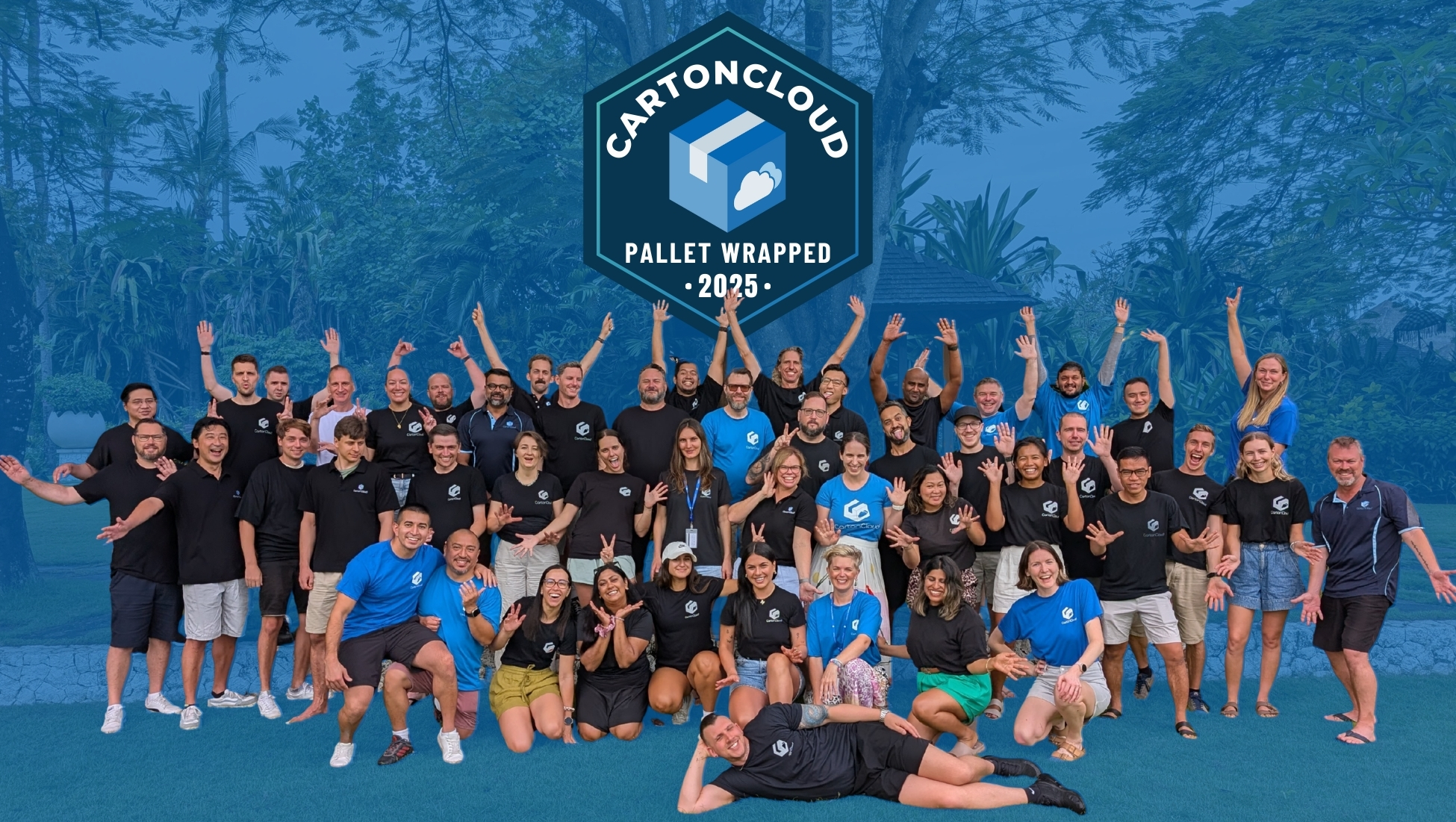
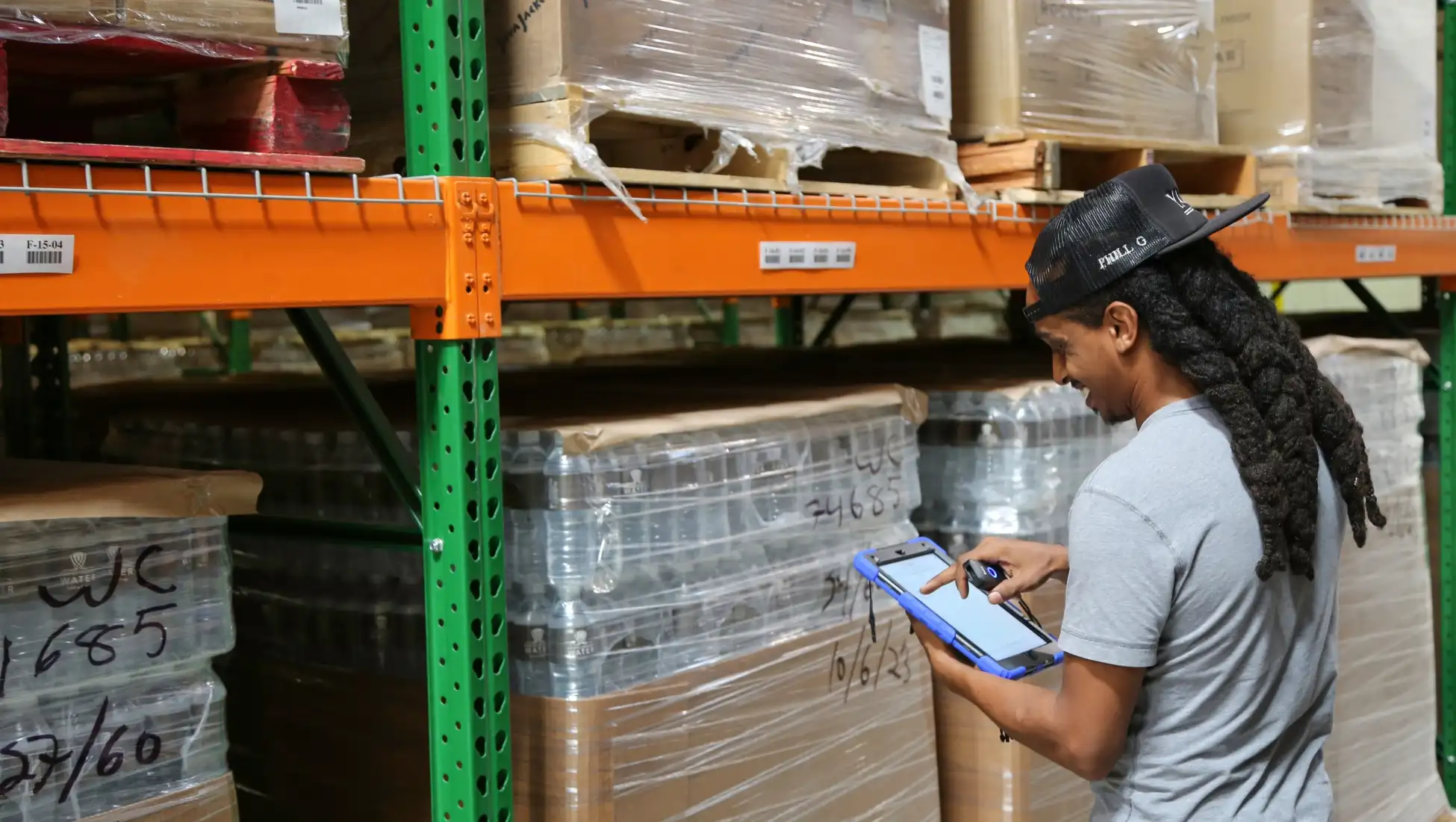
.webp)
